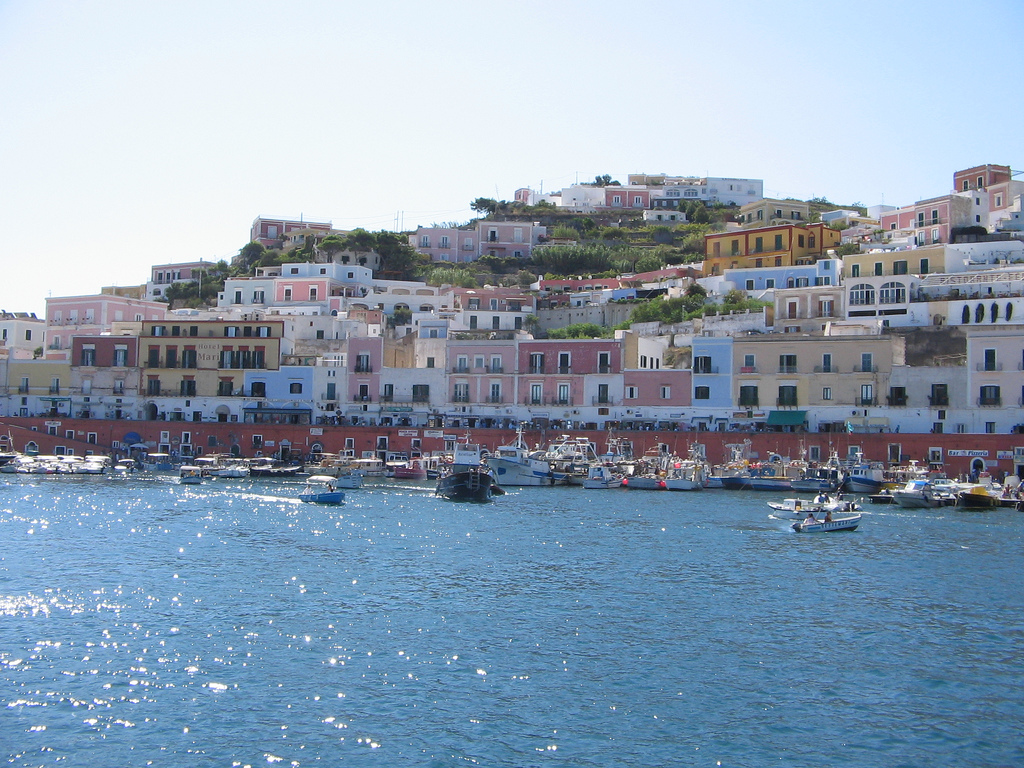Walking through Ponza and Ventotene you can see a strange architectural harmony given by a single design style that you can read in the variety and joy of the Mediterranean colours of the houses.
But how is it possible that there is a single idea behind the founding of these islands in the Pontine archipelago?
Both Ponza and Ventotene were the personal property of the Bourbon sovereigns and were donated to Charles III by his mother Elisabetta Farnese. In the eighteenth century they were practically uninhabited until the Bourbons decided to carry out a socio-urban experiment.
In practice they are 'foundation cities'.
It was a historical period when the monarchies began to be questioned by a bourgeois class that emerged from the industrial revolution and asked to participate in the government of the territory.
The first socialist philosophies begin with utopian experiments such as New Lanark by Rober Owen in Scotland or the Phalanstere of Fourier in North America.
In 1734 King Charles of Bourbon becomes the absolute monarch of Naples and also the parliamentary monarch of Palermo and fell in love with this part of the world. He then decided to show that he could govern as a sovereign by creating wealth among the population and with this he started some experiments that were at the same time urban, architectural, economic and social.
Charles remained in Naples until 1759 when he became king of Spain and moved to Madrid but his work was continued by his son Ferdinand who ascended the throne at the age of 8 years.
Bourbon socio-economic-architectural experiments
King Charles decided to transform the southern economy into one of the major industrial centres based on the knowledge and organization of industrial processes. His policies that included introducing coral processing in Torre del Greco with a policy that combined education and business are exemplary.
But above all the creation in 1752 of San Leucio is known, an entire village dedicated to the processing of silk, which also paid particular attention to the well-being of the workers, so much so that today it is a UNESCO Heritage site together with the Royal Palace of Caserta.
In Naples the Albergo dei Poveri (poors' hotel) was built, a welcoming structure for the most disadvantaged people in the kingdom where people could learn a trade. But also he sponsored the industrial revolution in the area of paper mills in Isola del Liri while Arpino in its evolution recalls the climate of social harmony that was pursued by King Charles of Bourbon.
This was the spirit that animated the king and this is also reflected in the design and implementation of the communities of Ponza and Ventotene.
This was an experiment in agrarian reform which in theory was to be extended to the whole kingdom but which was blocked by landowners. The advantage of the Pontine islands, in fact, was that they belonged directly to the king (not to the kingdom) for which Charles could experiment his ideas without interference.
The colonization of Ponza and Ventotene
When King Charles becomes the ruler of this particular southern kingdom composed of two states, the first thing he had to do was establish a foundation law, Pramatica Prima, and order among a set of codes of eleven legislations that had followed one another over the centuries: Roman, Lombard, Norman, Swabian, Angevin, Aragonese, Spanish, Austrian, feudal and ecclesiastical.
In the Prima Pragmatica an edict was issued to assign in emphyteusis (perpetuity provided it is worked) the lands of Ponza and Ventotene (then called Pandataria). The land had an area of 5 'tommoli' and the condition for participating in the tender was that of not owning real estate in the kingdom. Some tax reliefs and also valuable awards were also granted to these settlers.
The people who responded to the announcement were therefore the first inhabitants of these well known islands who were participating in a 'bet' like that of the British who went to live in the New World in America. They were not convicts or wrongdoers but courageous people in various works of life.
Obviously, a social experiment is also an architectural experiment with the construction of a village with hospital, church, customs, court, barracks and lodgings for officers. The experiment also involved the arrangement of the port and equipment for fishermen. Most of the inhabitants came from Ischia.
This experiment by Charles was taken over by his son Ferdinand IV and in 1772 the construction of the hamlet of Le Forna began on the island of Ponza, which was colonized by people from the coast and especially from Torre del Greco. The different origins of the first settlement communities explain the extreme rivalry that has always been manifested between Ponza and Le Forna.
The sovereigns tried to export the experiment to the rest of their kingdom but they met a very strong resistance from the landowners who saw their own power being undermined.
In the meantime, Ferdinand started another socio-economic experiment on the island of Ventotene and in 1771 the first 28 families of settlers arrived to whom 5 'tommoli' had been assigned, where 1 tommolo corresponds to about 3,300 square meters.
The end of the harmony in the communities, however, came with Napoleon and the French who in 1799 first sold the royal properties granted in emphyteusis and favoured the introduction of unscrupulous landowners who were only interested in the possession of the assets and the exploitation of the workers. Few people. who thus became owners. lived on the islands they bought at the auctions and there was no longer a situation of harmonic socio-economic development.
The last affront to the Bourbon experiment came with the arrival of the Savoy era who auctioned even the few plots that still enjoyed the regime of the emphyteusis.
The dream of the sovereigns Charles and Ferdinand IV of 'a bit' to all and not all to a few 'was broken forever.








Follow us